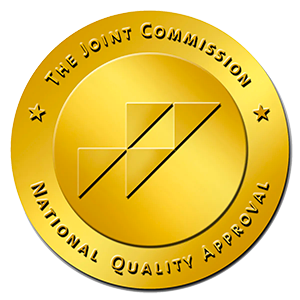By Wesley Gallagher
Triggers are a common term discussed in recovery. Whether you’re recovering from addiction, mental illness, or the effects of trauma, a key aspect of recovery is understanding, recognizing, and avoiding triggers.
But have you ever heard of glimmers?
Understanding Glimmers
So, what are glimmers?
“Glimmer” is a term coined by licensed clinical social worker Deb Dana who specializes in treating complex trauma through the lens of Polyvagal Theory. While many of the particulars of Polyvagal Theory have not been proven empirically, the general theory and other similar theories about the role of the nervous system in healing trauma are regularly used in therapeutic settings.
Glimmers are small moments that make us feel a sense of calm, connection, peace, and safety. They are the little things we notice that instantly elevate our mood, even when we are feeling down or are in the midst of a bad day.
Comparing glimmers and triggers is another way to understand them. Triggers are sensory reminders that cause us to feel unsafe or relive past trauma, but glimmers are sensory cues that do the opposite. While triggers may send your body into fight, flight, or freeze mode, glimmers calm your nervous system and make your body feel safe. Triggers can worsen your mental health or lead to addiction relapse, whereas glimmers can improve mental health and create resilience against relapse.
Examples of Glimmers
A glimmer can really be anything that allows you to experience the joy of life, but here are a few examples:
- Noticing your favorite flower or a beautiful butterfly while on a walk
- Listening to a song that fills you with emotion
- The feeling of your dog’s furry ears at the end of a long day
- Spotting a rainbow or a heart-shaped cloud
- Witnessing a random act of kindness
- A hug from a beloved friend or family member
- The scent of fresh baked bread
Whatever it is, you’ll know it’s a glimmer when it stops you in your tracks and sparks a bit of energy in your body, mind, and spirit.
You’ll know it’s a glimmer when it stops you in your tracks and sparks a bit of energy in your body, mind, and spirit.
The Power of Glimmers
What’s the big deal about these little glimmers? Well, trauma trains your body and brain to be constantly on guard against danger; whether you realize it or not, your nervous system can get stuck in surveillance mode. While it’s beneficial to be on the lookout for triggers while you’re in recovery, it’s unhelpful — if not, exhausting — to be in a constant state of vigilance.
Enter glimmers.
Here are just a few ways glimmers can support you in recovery:
- Build Resilience – Glimmers counteract negative stress responses that so often color the days of people who’ve experienced trauma. By promoting feelings of safety and security and shifting your focus from obstacles to growth opportunities, glimmers can become a reliable coping mechanism for everyday stressors.
- Promote Healing – As you add glimmers to your recovery arsenal, you’ll learn to regulate emotions and calm your nervous system, which is essential to recovering from trauma. You’ll be able to cling to positive anchors in tough times. And with your brain focused on little wins and sparks of joy, you’ll be more aware of the progress you’ve made in your recovery journey.
- Cultivate Optimism – Looking for positive moments in life will naturally lead to a more optimistic mindset as you train yourself to notice the good in everything around you. This shift in outlook will fuel much-needed hope in the success of your recovery and motivate you to keep going even when life get tough.
Looking for positive moments in life will naturally lead to a more optimistic mindset as you train yourself to notice the good in everything around you.
Over time, you’ll find your brain being trained to seek out moments of joy in every situation, leading to a more peaceful way of being in the world.
How to Harness the Power of Glimmers in Your Recovery
You’re in recovery, and you’ve learned to recognize and avoid your triggers. Now it’s time to learn to recognize and seek out your glimmers. Here are some tips for adding more glimmer to your recovery journey:
- Practice mindfulness to allow yourself to start noticing little things you typically ignore; this is where glimmers are often hiding.
- Start a gratitude journal to train your mind toward positive experiences in your days, down to the smallest moments that spark joy.
- Actively seek out activities, people, and places that bring you joy. You don’t have to wait for glimmers to find you: Go glimmer hunting!
- As you find or create your glimmers, write them down so you have a reference when you need to find a little joy in life.
Glimmers don’t have to happen in isolation; let others in on your glimmering experiences. Nothing in recovery should be done alone, and everyone could use a little more glimmer in their lives.
Bournewood Health Systems Is Here to Help
At Bournewood Health Systems, we are dedicated to helping patients get their recovery journey started off right, no matter how deeply they are struggling. Our full-service, independent, privately-owned psychiatric facility is equipped with all the supports needed to start healing from mental illness and addiction. We treat adults, as well as adolescents ages 12 to 18.
Unlike many treatment programs, we have a psychiatric physician on campus at all times, and our triage, assessment, and admissions process happen around the clock. Once here, our comprehensive continuum of services provides everything needed to get and stay well, including coping mechanisms — like glimmers — to take with you once treatment is completed. Reach out to learn more today.


